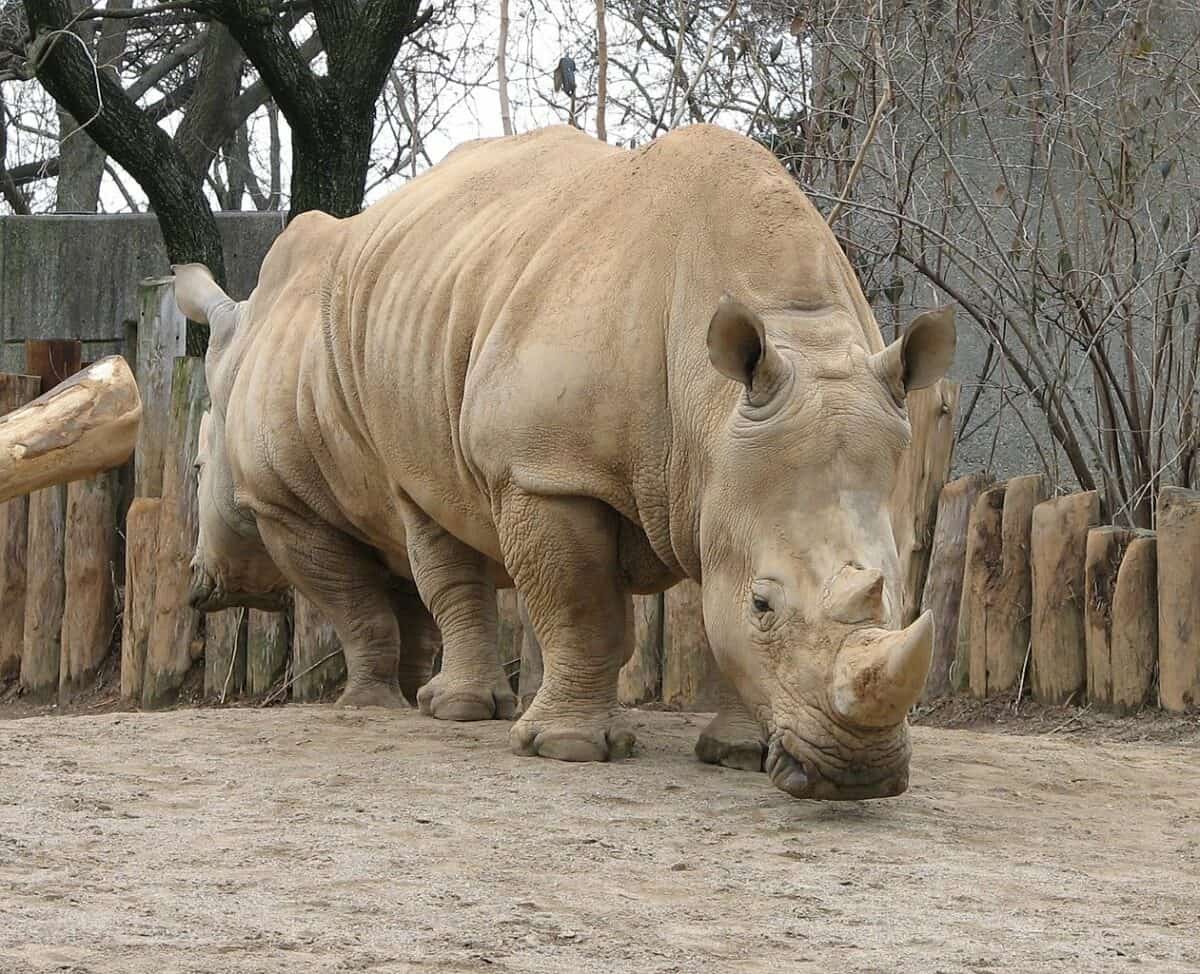Are you looking for Where to See Rhinos? We have searched for you for the best places to see Rhinos.
Rhinos belong to the ‘old ones’ on our planet. Just like elephants and hippos, they are the surviving representatives of a group of animals that were once very species-rich and diverse: the megaherbivores or large herbivores. none
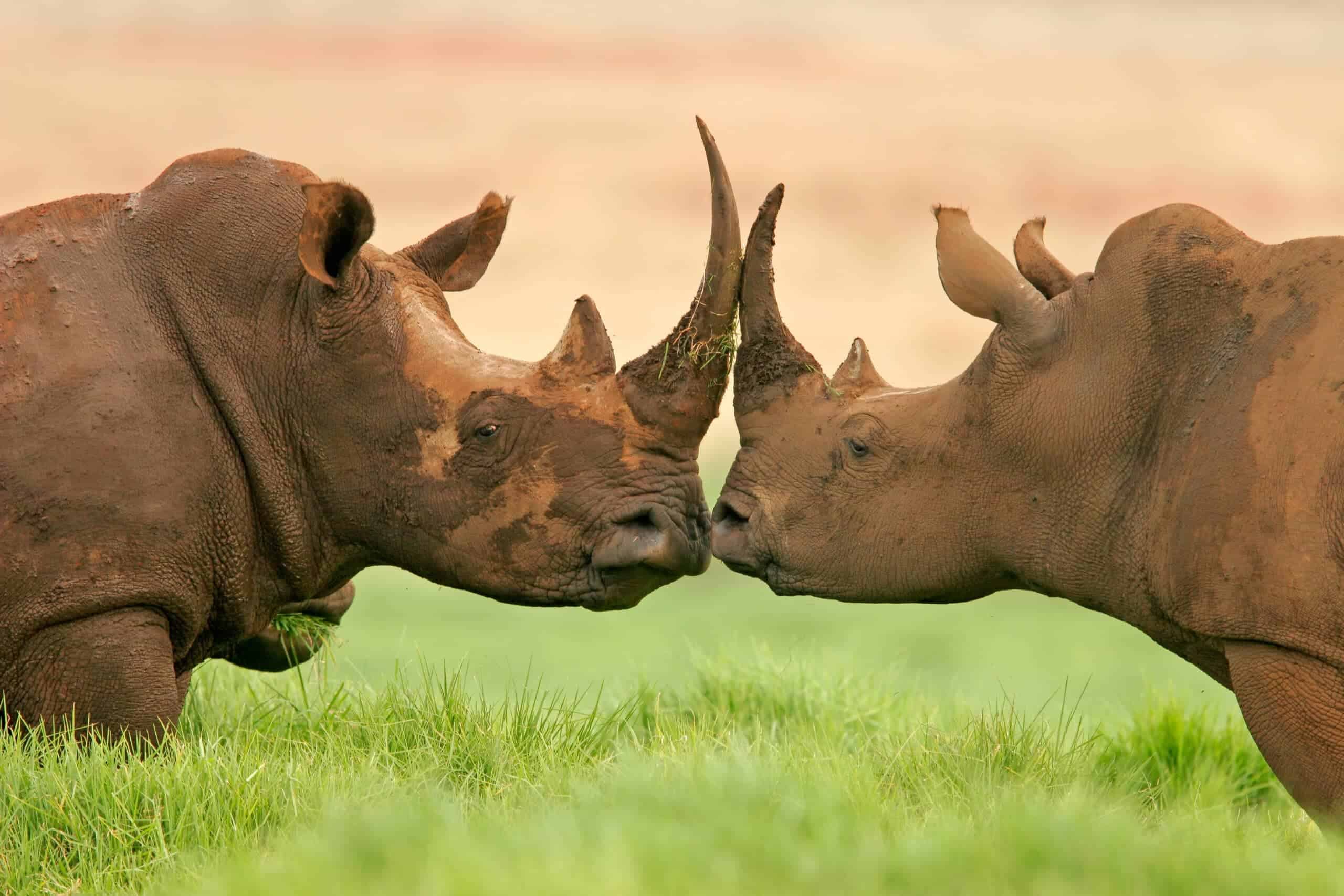
Unfortunately, rhino populations all over the world are increasingly endangered and close to extinction.
Key Points
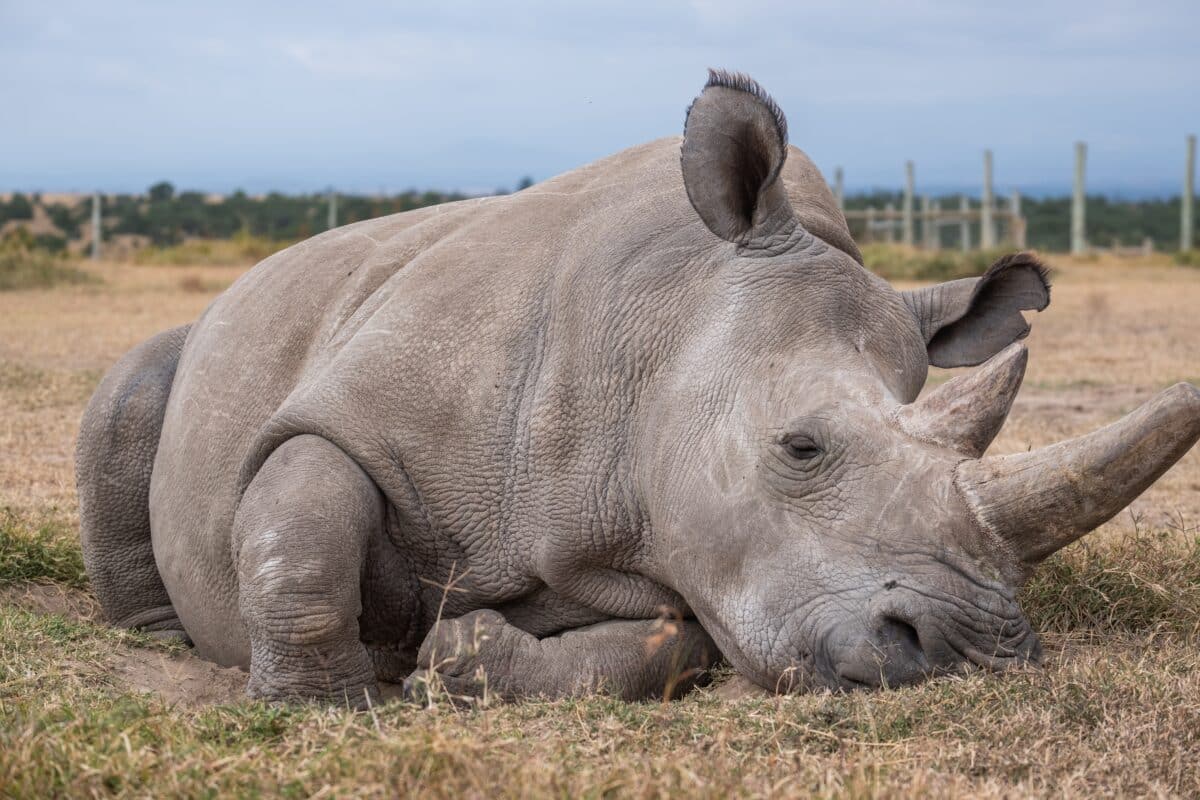
A closeup shot of a magnificent Northern white rhino. Image via Depositphotos
- Rhinos are among the surviving representatives of a group of animals called megaherbivores.
- Rhino horns are highly valuable and more expensive than gold, leading to high demand and poaching.
- There are five rhino species: white rhino, black rhino, Indian rhino, Sumatran rhino, and Javanese rhino.
- Kaziranga National Park in India is a UNESCO World Natural Heritage sight and is home to over 70% of the world’s population of one-horned rhinos.
- The Khama Rhino Sanctuary in Botswana, Etosha National Park in Namibia, and Mkhaya Game Reserve in Eswatini are some of the places recommended for rhino sightings.
An Endangered Species
In this chapter, we answer how endangered rhinos are and show the endangerment of rhinos for every species.
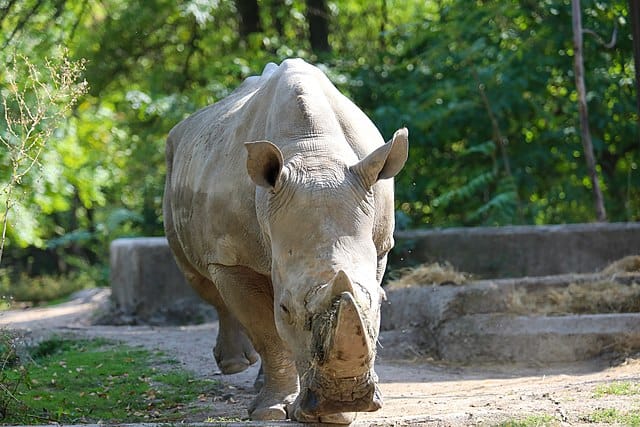
There were many more rhino species in the past, but all but five species have become extinct.
Today rhinos only live in central and southern Africa and some smaller areas in Asia. In Africa, there are still many more rhinos than in Asia. About 600,000 rhinos lived in Asia just a few hundred years ago. The destruction of their habitat and hunting for the horn has brought them to extinction.
Why are Rhinos Endangered?
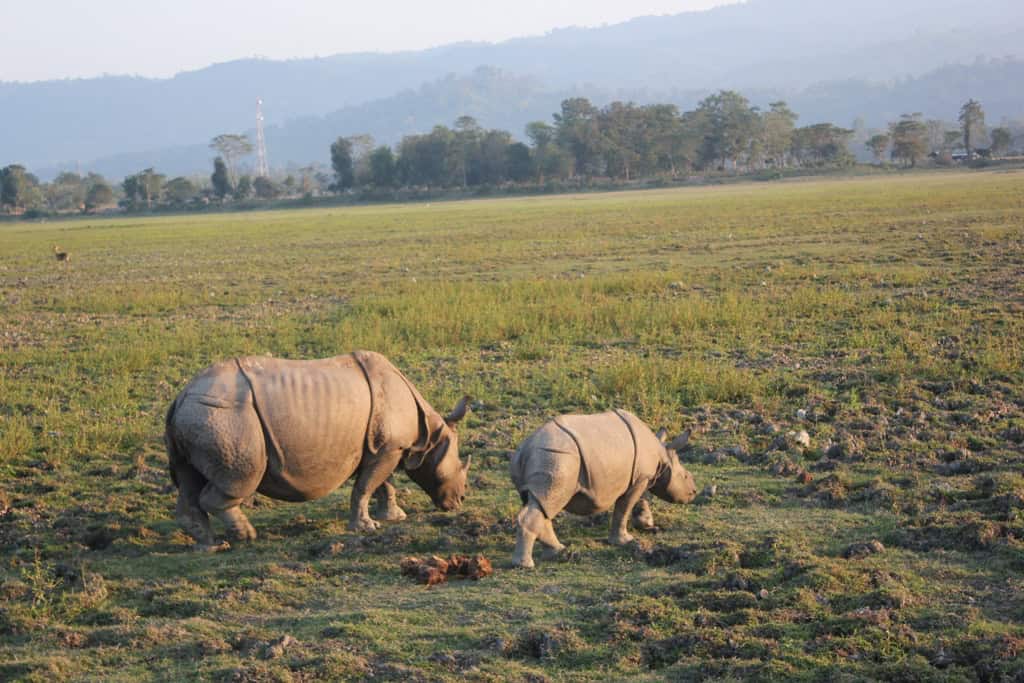
Why is it so challenging to See Rhinos in the Wild? During the colonial period, uncontrolled hunting caused massive population collapses to the brink of extinction. Now only small populations survive in protected areas.
On the one hand, rhinoceroses, along with elephants, buffalo, lions, and leopards, were among the most sought-after hunting trophies for big game hunters as the “Big Five.” On the other hand, African rhinos were hunted for food and driven out of their habitat by colonization.
In traditional Asian medicine, rhino horn is a sought-after raw material that is said to have a fever-reducing, detoxifying, and antispasmodic effect. This belief still holds today and leads to constant demand. In some countries of the Middle East, especially in Yemen, rhinoceros horns were also processed into handles for daggers in the second half of the 20th century.
Current Rhino Populations
| Rhino Species | Estimated Population Size |
|---|---|
| White Rhino | 18,000-20,000 |
| Black Rhino | 5,042-5,455 |
| Indian Rhino | 2,000-3,000 |
| Sumatran Rhino | Less than 100 |
| Javan Rhino | 58-68 |
White rhino
The last two northern white rhinos in the world, Source: YouTube, Uploaded: Animal Watch
White rhinos have massive bodies, short necks, and large heads. A striking hump in the neck of the white rhino, made of strong muscles and ligaments, helps to hold the heavy head. White rhinoceroses have an elongated back of the head, which makes them carry their head relatively low. White rhinoceroses also have two horns arranged one behind the other.
Short, sturdy legs carry the rhinos’ stately weight with three toes on each foot. The footprint resembles a four-leaf clover.
Black Rhino
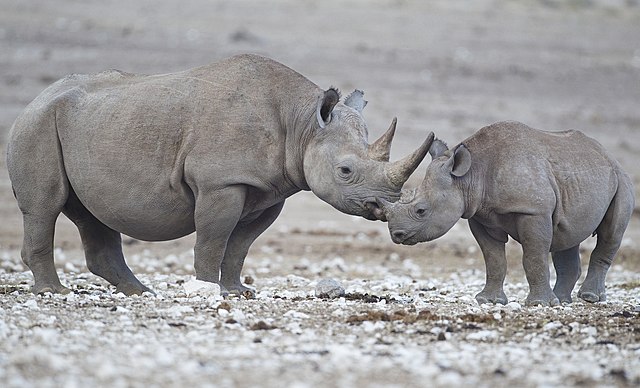
This is the other rhino species in Africa. The number of these animals decreased dramatically in the 20th century.
Some subspecies were exterminated in Central Africa. Conservation measures are taking effect only in the richer countries of Africa, and the populations are increasing again. This is especially true for South Africa and Namibia. However, there are probably less than 5,000 black rhinoceroses in total. More minor occurrences of this rhinoceros species can be found in Kenya, Tanzania, Zimbabwe, and Rwanda.
Indian Rhino
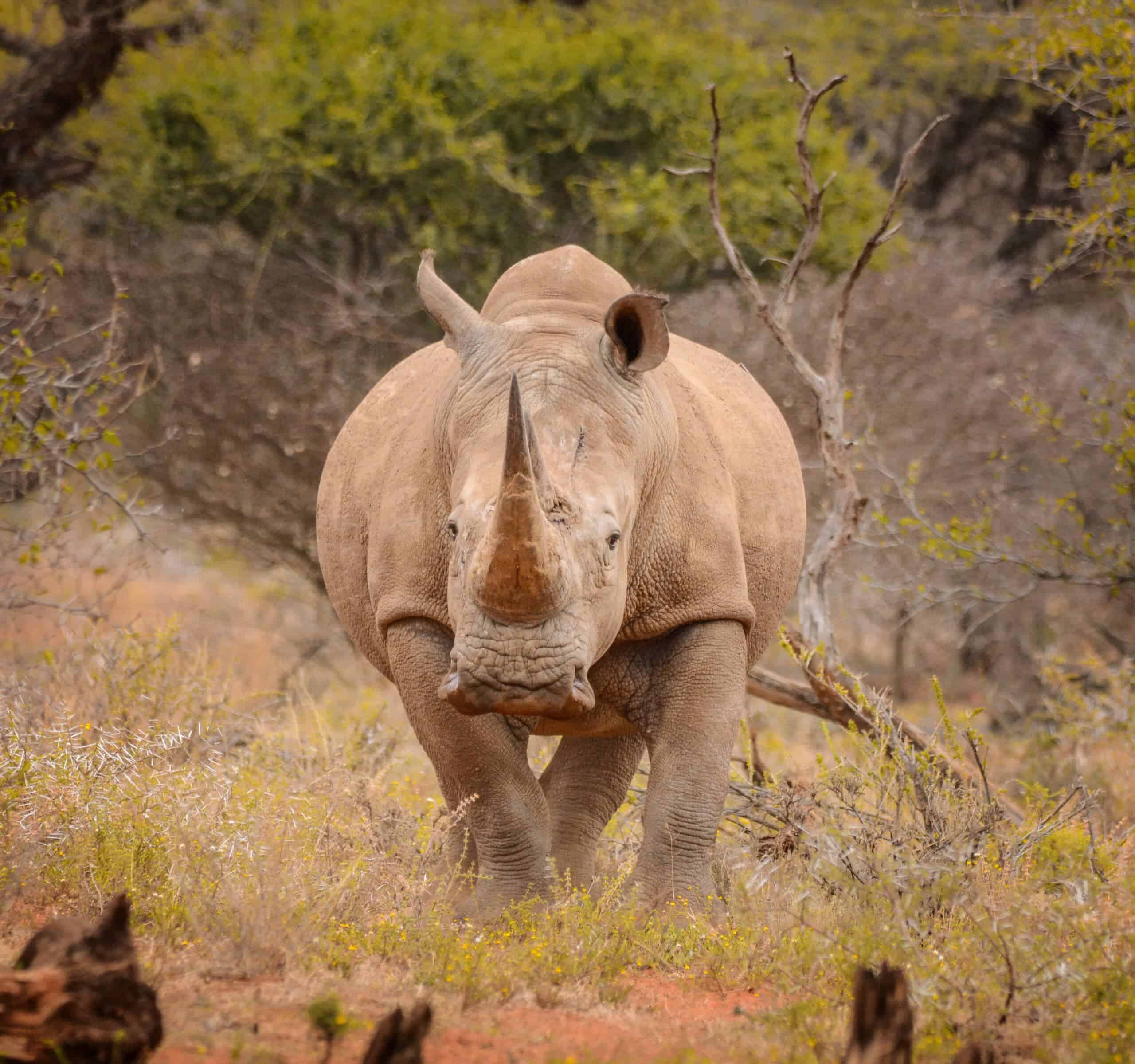
A rhino species that live in Northern India and Nepal. There are still 2,000 to 3,000 animals in the wild, most of them in Indian national parks. About 500 specimens of this species live in Nepal. The populations in the national parks have been increasing again in recent years.
Focal points of rhino populations are the Kaziranga National Park in India and the Chitwan National Park in Nepal. The tank rhinoceros can be seen in Berlin, Munich, and Nuremberg zoos.
Sumatran Rhino
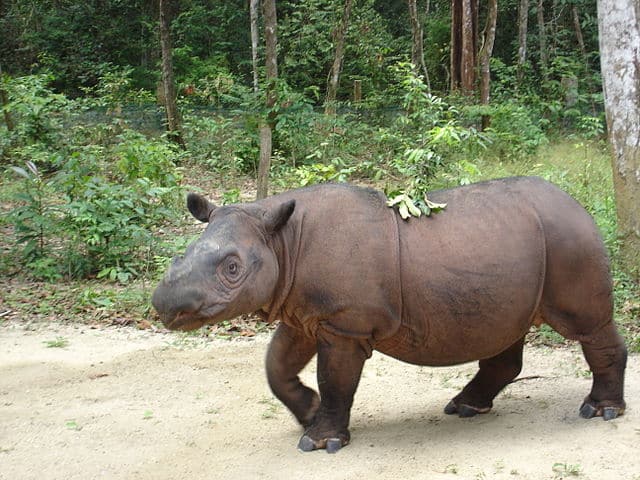
Other than the name suggests, this rhino species inhabited the island of Sumatra, other islands, and the southeast Asian mainland.
The Sumatran rhinoceros has a body height of only 100 to 150 cm, the smallest and most primitive of the five species living today. The Sumatran rhinoceros is the only rhinoceros species with more or less dense hair. It carries two horns. The calves have long, dense reddish-brown hair all over their bodies. The animals use their extended, grasping upper lips to pick branches, leaves, fruits, and other plant parts.
Javanese Rhino
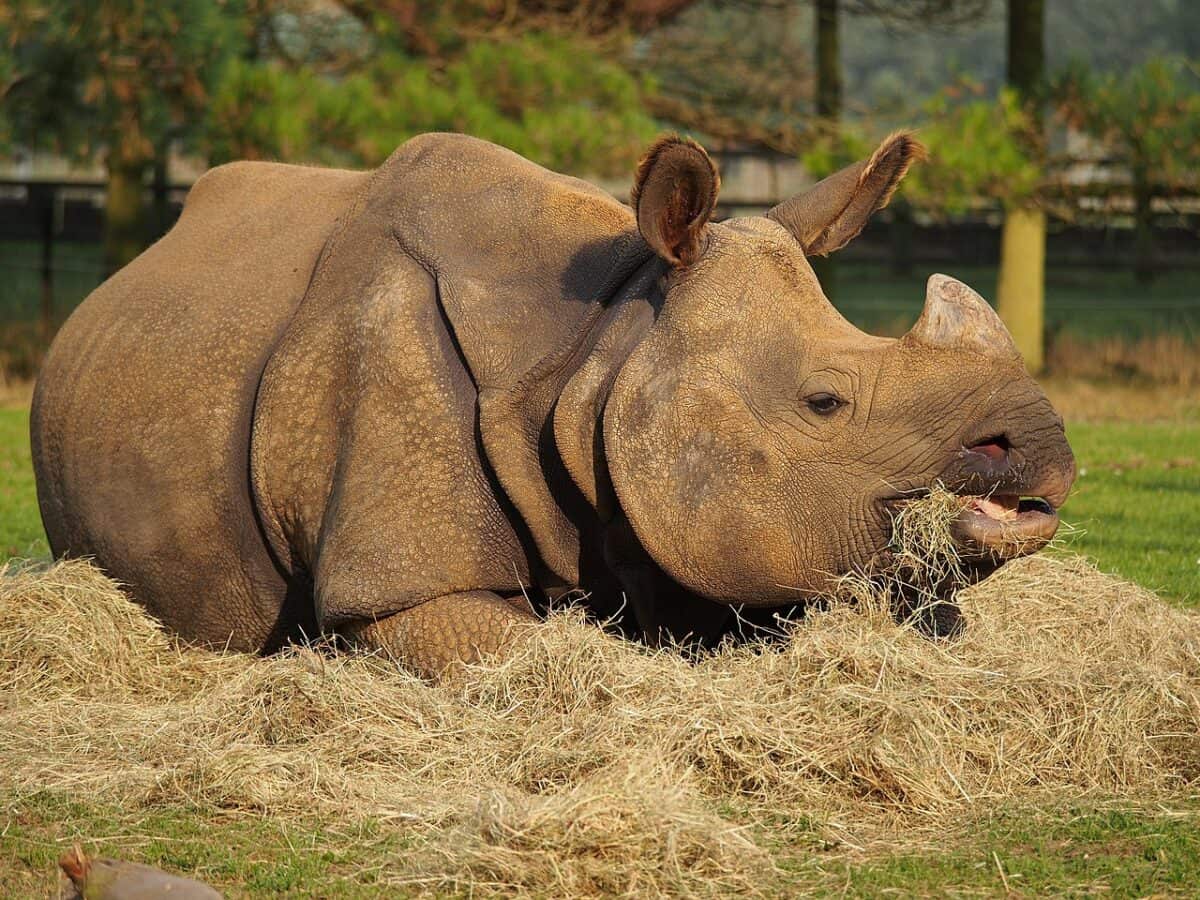
The Java rhinoceros reach a shoulder height of up to 170 centimeters and weigh 1,500 and 2,000 kilograms. In contrast to its two African relatives and the Sumatran rhinoceros, it carries only one horn, which can reach a length of 25 centimeters in males. The females are often hornless.
Marco Polo believed he had discovered the legendary unicorn when he saw the first rhino horn in Myanmar. That this animal was probably a Java rhinoceros is evident because, at the end of the 13th century, this species was found from the lowlands of Bangladesh over large parts of Indochina to Indonesia. Today the Java rhino is one of the rarest large mammals in the world, as the species only lives in the Ujung Kulon National Park on the western tip of the Indonesian island of Java.
Best Places to See Rhinos in the Wild
The following ranking is sorted after criteria that we believe are the most relevant for those seeking to see rhinos in the wild. We have compiled a list of the best places for seeing rhinoceros in the wild.
#1 Etosha National Park, Namibia
A visit of Etosha National Park is one of the highlights of a Namibia trip, and a very good place for rhino sightings. In fact, it is one the best areas to see them on the African continent!
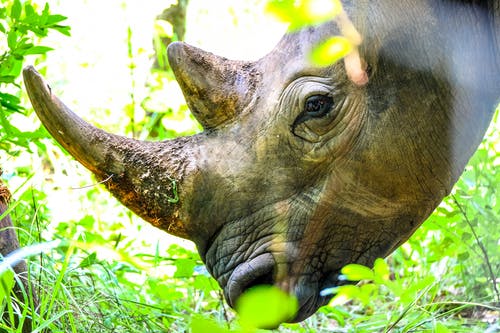
Etosha covers almost 23,000 square kilometers and was declared a game reserve by the German South West African administration as early as 1907.
Unfortunately, the rhino population is also threatened in the Etosha National Park. In February 2017 there was another heavy loss. In the western part of the park near Galton Gate, 40 rhinos were poached and their horns sawed off within a few days. The poachers used drones to locate the animals.
Accommodations and tour operators:
Here is a list of the best accommodations and tour operators that are the best places to see rhinos in Etosha National Park, Namibia:
#2 Kruger National Park, South Africa
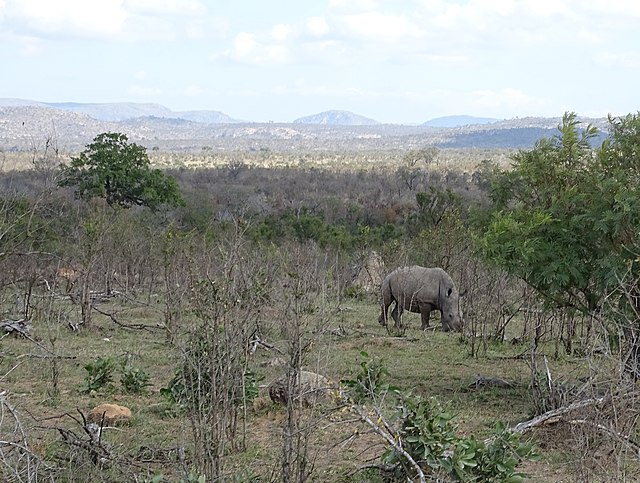
When the Kruger National Park was founded in 1926, no white rhino population was left because of the extensive poaching. It was not until around 1960 that they were resettled from the Natal.
In the meantime, about 3,000 white rhinos and 300 black rhinos live in the park again. They are quite blind, but due to their excellent hearing and nose, it is scarce to get near them. Now it is one of the best places to see Rhinos in the Wild. They also have a large lion population, and it is a good game reserve to see other mammals.
Accommodations and tour operators:
Here is a list of the best accommodations and tour operators to have rhino sightings in Kruger National Park. The Kruger National Park has countless accommodations, but we looked for three that were sticking out for us, from high to low:
#3 Serengeti National park, Tansania
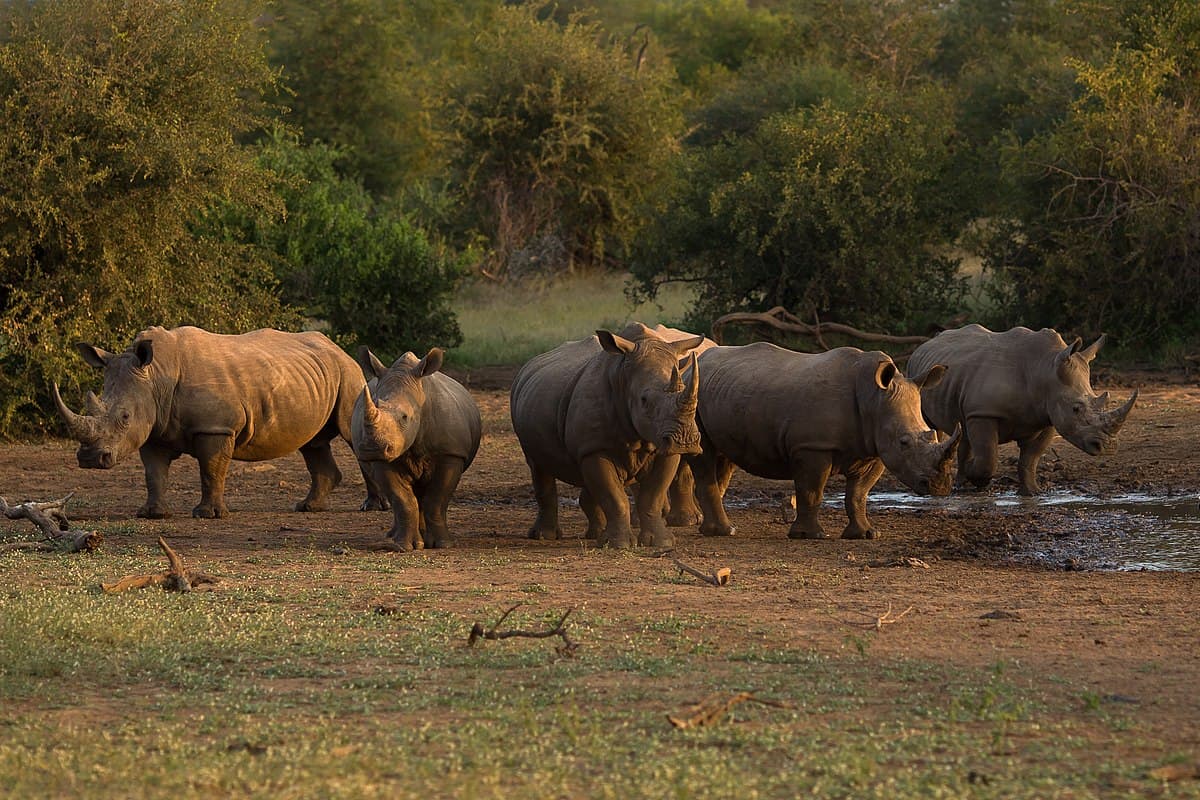
The Serengeti Park is proud of its large group of white rhinos and their offspring! Since the park opened in 1974, more than 40 young white rhinos have been born here, romping across the vast areas and enchanting our visitors. This is a great park to visit for rhino spotting.
White rhinos are the second largest land mammals on earth. They reach a shoulder height of up to 1.90 meters. Do you have any idea how heavy a white rhino can get? One male can weigh up to 3.6 tons!
Accommodations and tour operators:
Here are a few selected lodges that are the best accommodations and tour operators to see rhinos in Tansania.
#4 Kaziranga National Park, India
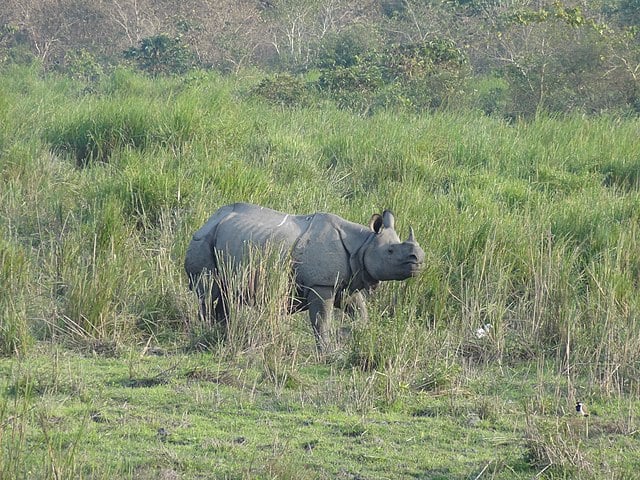
The Kaziranga National Park is located in northeast India, in the present state of Assam.
Along the great river Brahmaputra, in the Karbi Anglong Hills, two-thirds of the world population of the unicorn rhino still lives. The 430 square kilometers large protected area is famous for these unique animals and has been UNESCO World Natural Heritage since 1985. Since 2006 the national park is also a tiger reserve.
Accommodations and tour operators:
Here are the best accommodations and tour operators to see rhinos in Kaziranga National Park:
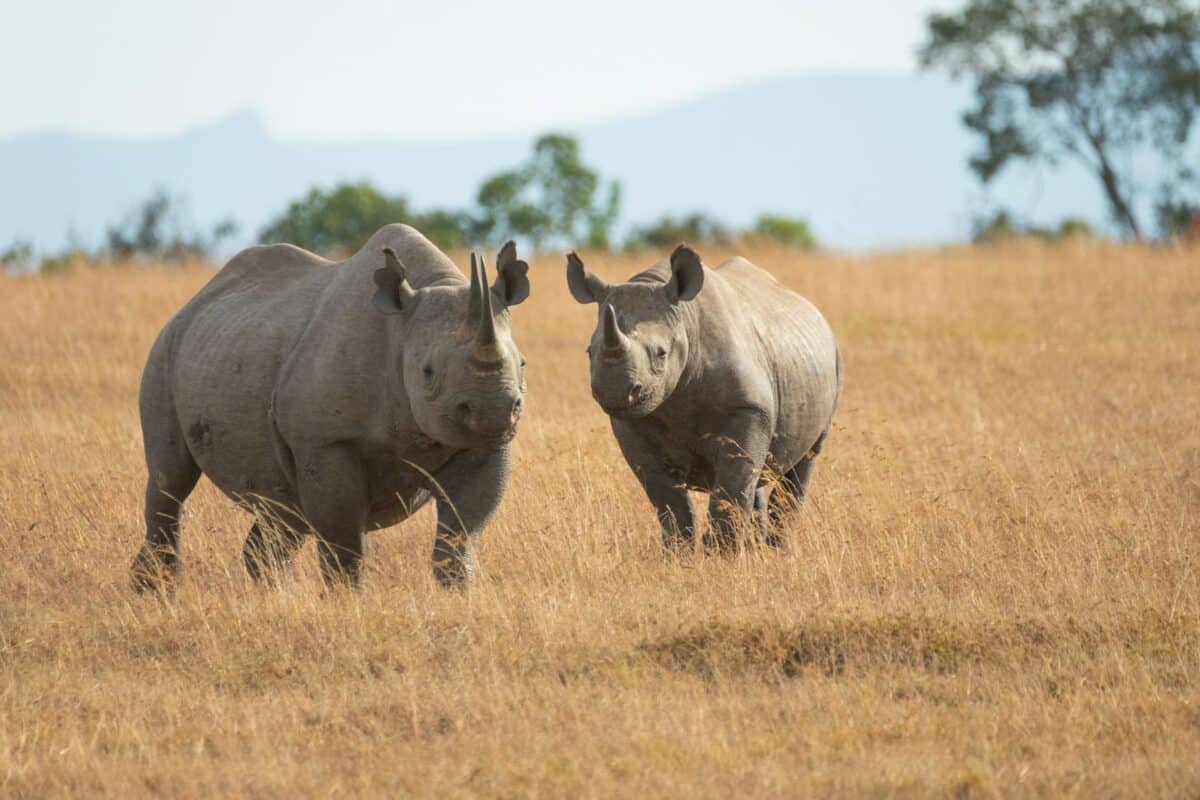
#5 Khama Rhino Sanctuary, Botswana
The Khama Rhino Sanctuary was founded in 1992 as a community project to protect rhinos, which were almost extinct in Botswana due to poachers. The remaining white rhinos in Moremi and Chobe were relocated to the new sanctuary.
Accommodations and tour operators:
Here are the best accommodations and tour operators to see rhinos in The Khama Rhino Sanctuary, Botswana:
#6 Mkhaya Game Reserve, Eswatini
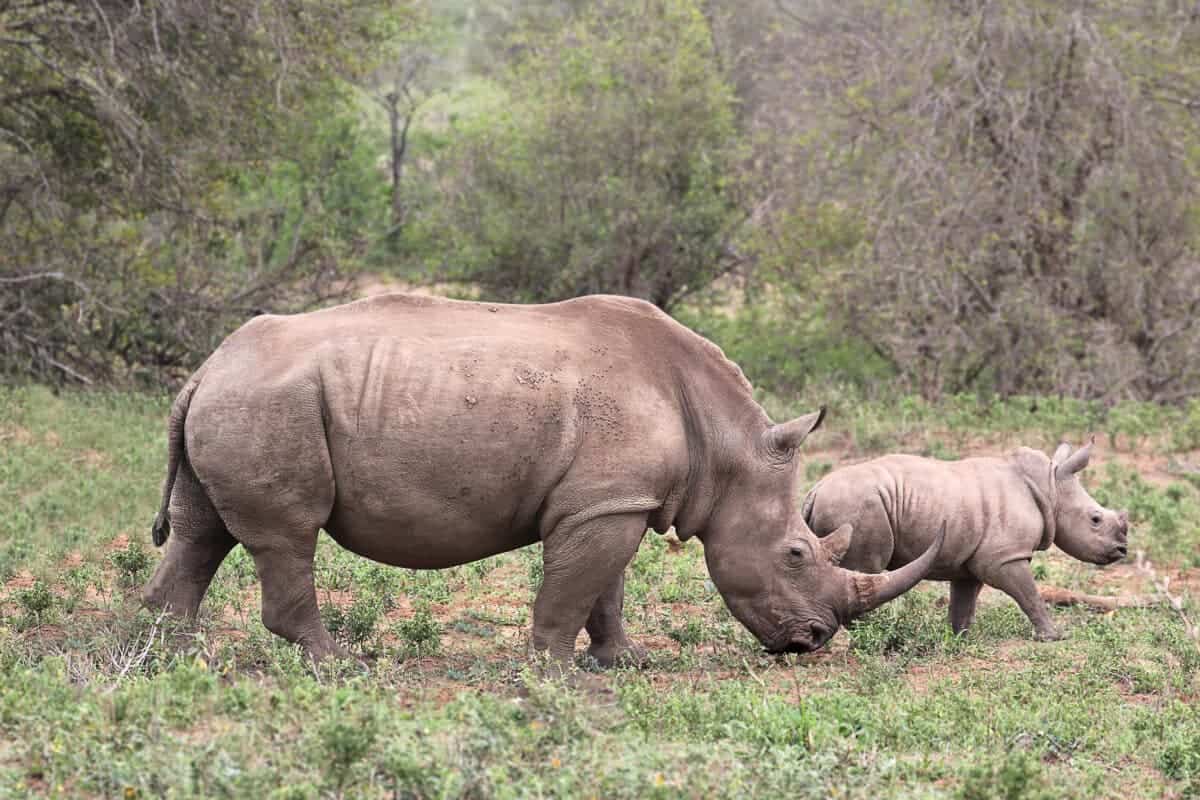
The Mkhaya Game Reserve, not far from the settlement of Siphofaneni – 65 kilometers southeast of the capital Mbabane – is the most famous in the Kingdom of Swaziland, the smallest state in southern Africa.
The reserve is named after the Acacia nigrescens (‘Knob tree’), a tree species of the southern savannah with button-like outgrowths on the trunk. The reserve cannot be visited with your own (rental) car. Advance booking is necessary.
Accommodations and tour operators:
This is the best accommodations and tour operator to see rhinos in Mkhaya Game Reserve, Eswatini:
Summary of Where to See Rhinos
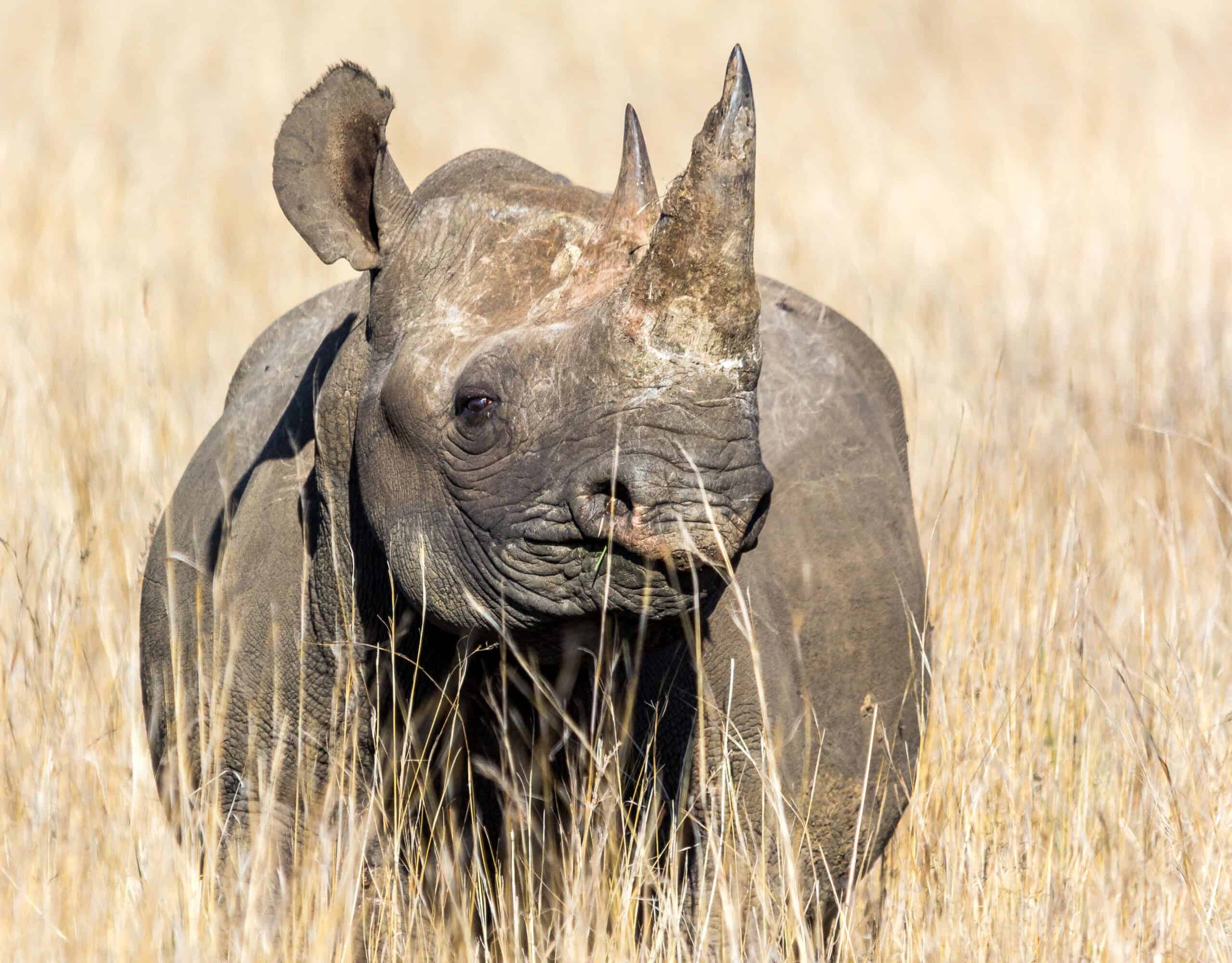
Rhinos are very diverse and unique creatures. They deserve our efforts to be saved. There are a lot of unique places where you can See Rhinos in the Wild.
If you would like to contribute to the safety of rhinos, then visit our friends at the WWF here.
Ever thought about going to Central Africa? Look at the Wildebeest Migration or a trekking tour to the Mountain Gorillas on our blog.
If you love rhinos, check out these stories:
- Rhino takes a stroll through town in Nepal
- The AMES Foundation and Their Fight Against Rhino Poaching
- Black rhino born at Chester Zoo
- Africa rhinos population on the rise
- Saving South Africa’s white rhinos from extinction
Join our Forum for free today!

- Third Elk Incident in Two Weeks in Estes Park, Colorado and How to Stay Safe - July 4, 2024
- 17 Animals That Mate For Life - June 24, 2024
- 13 Animals That Lay Eggs (Some Might Surprise You!) - June 16, 2024

